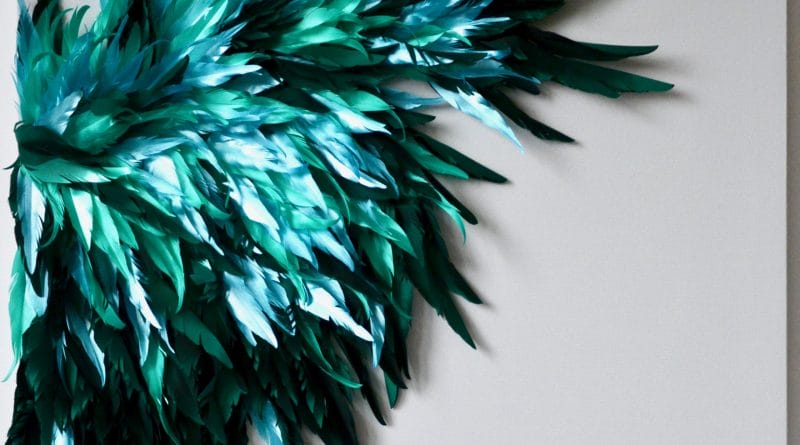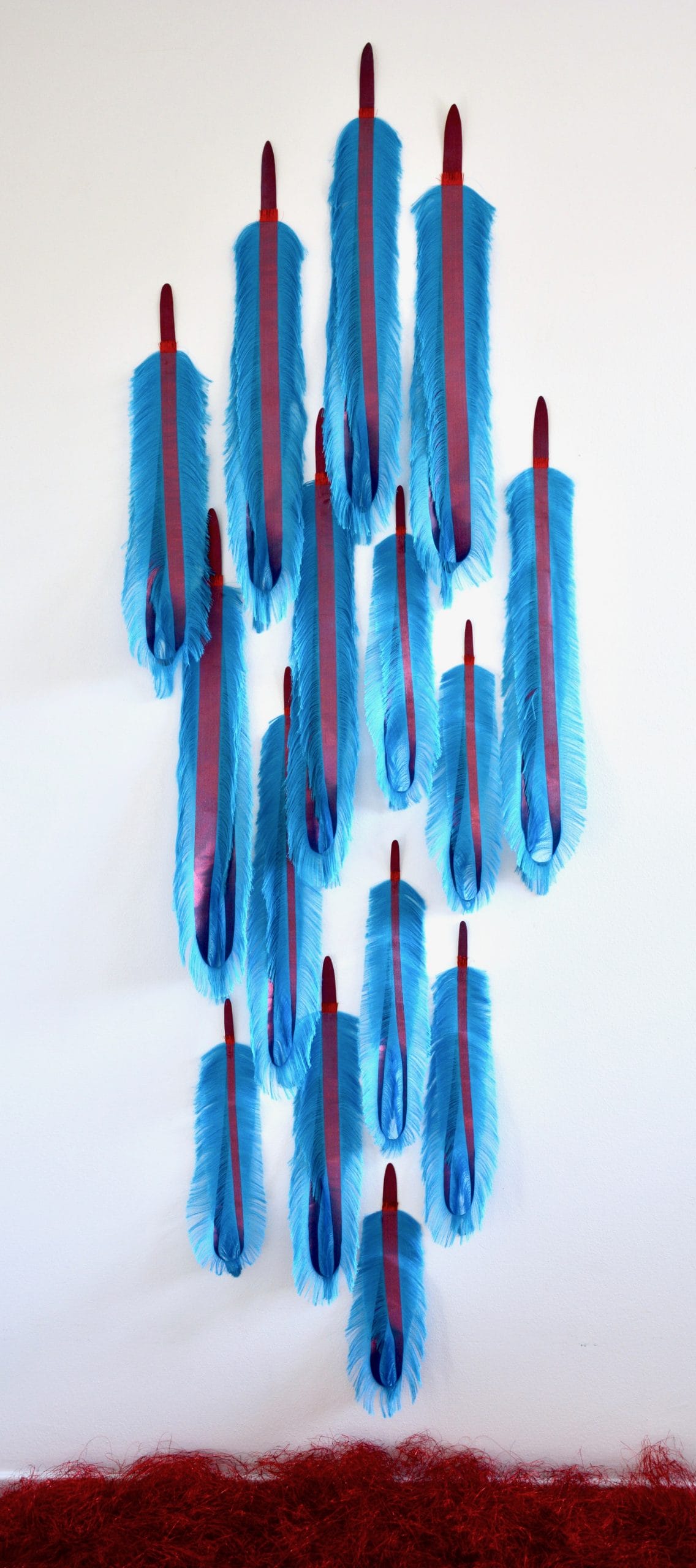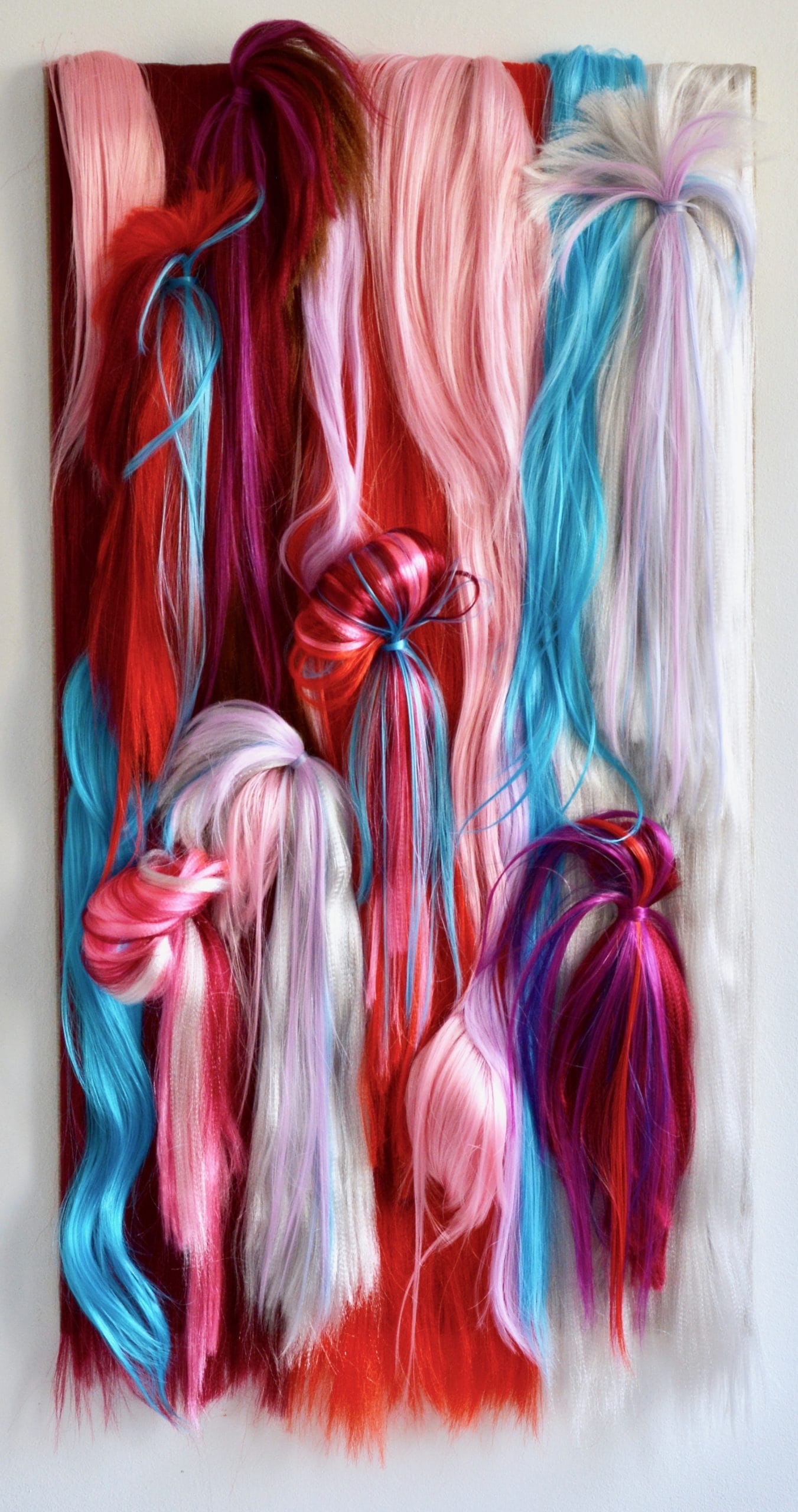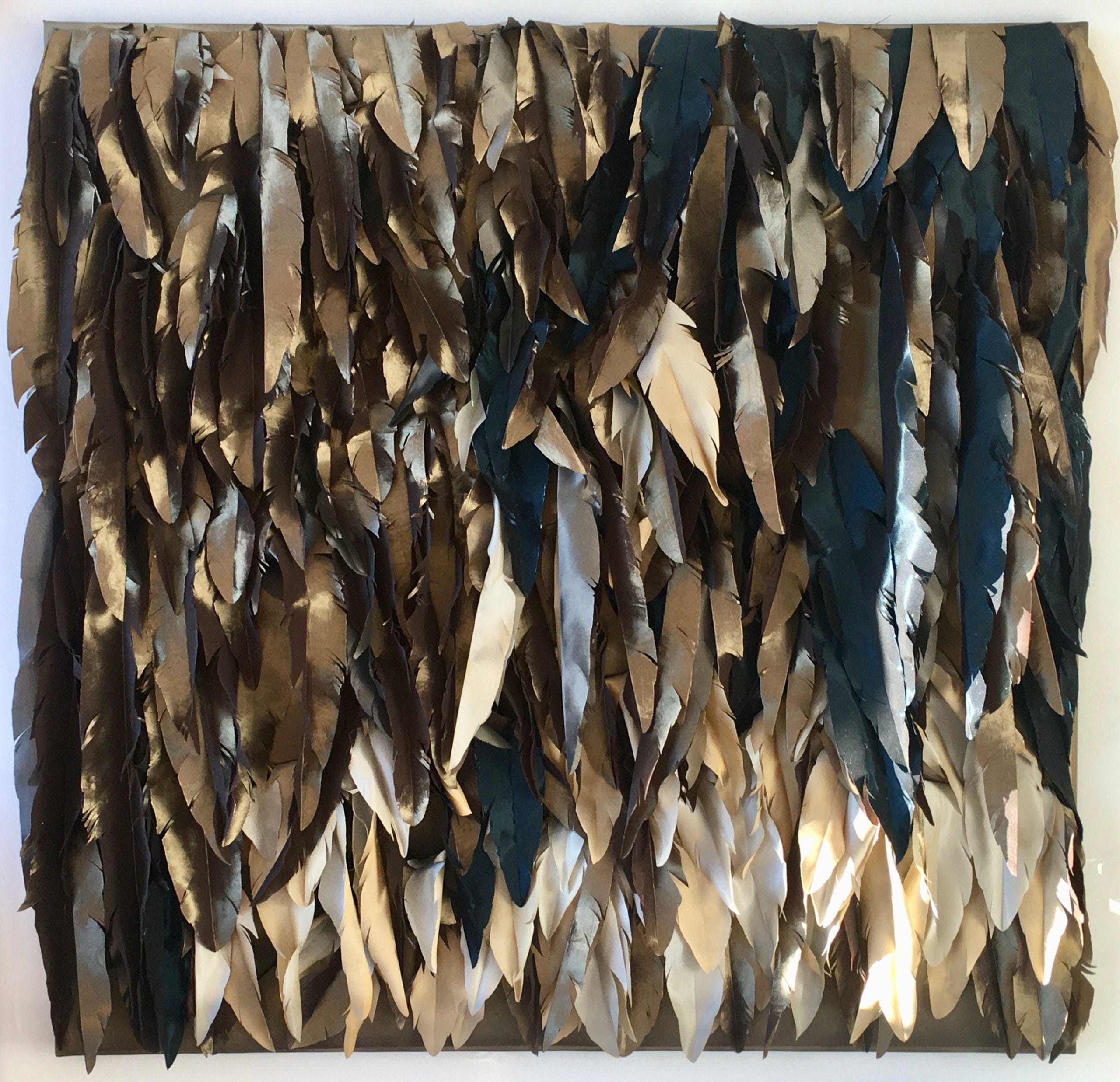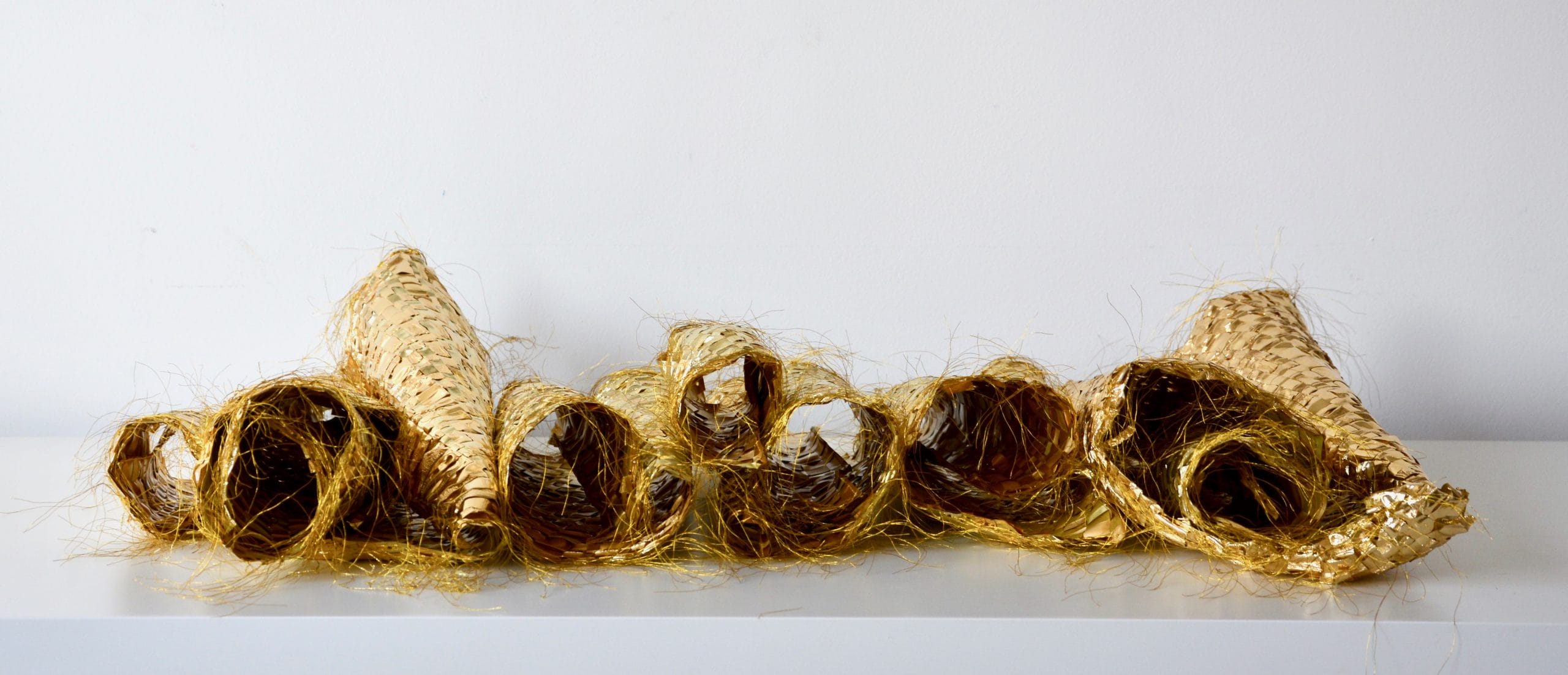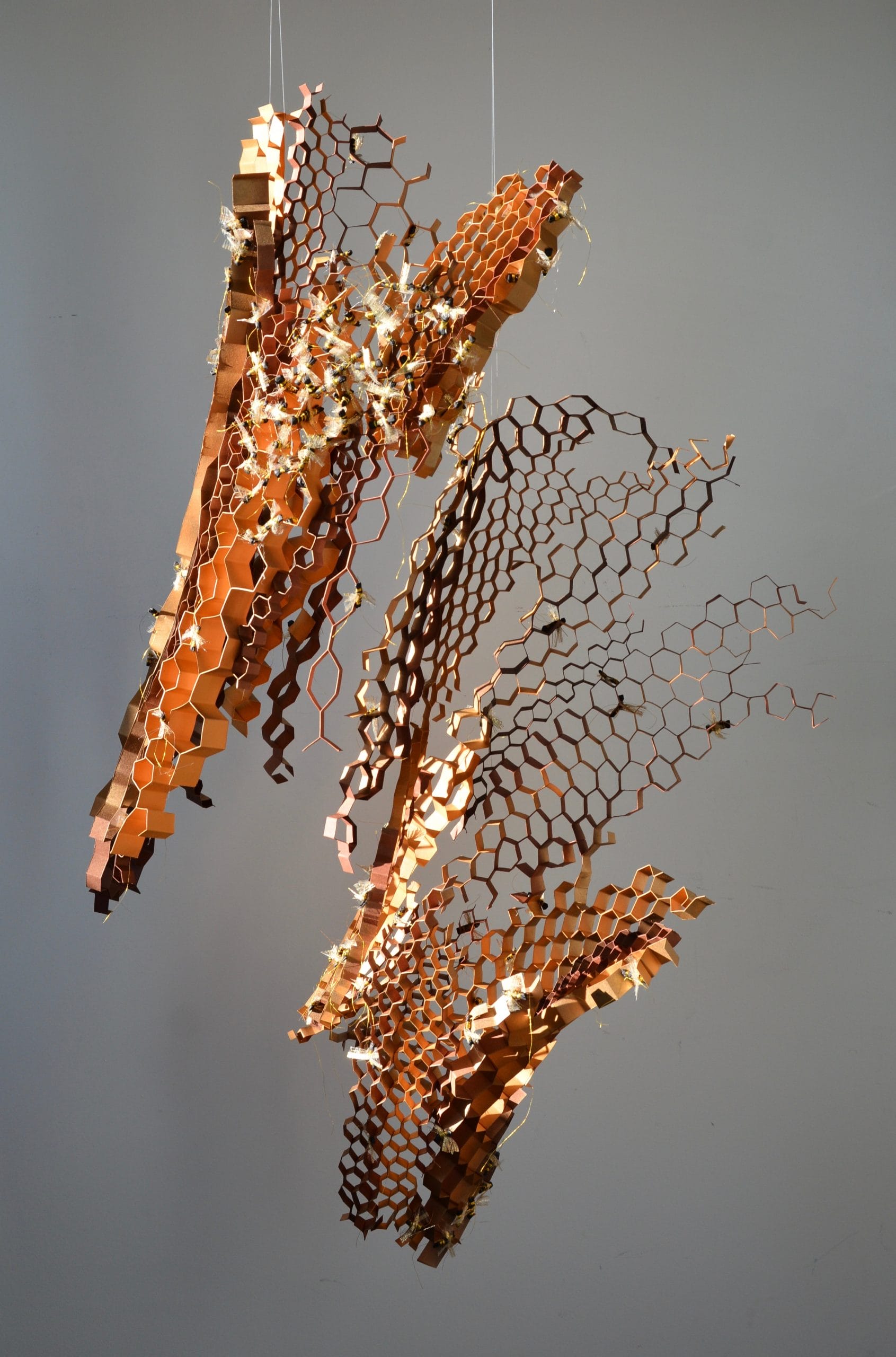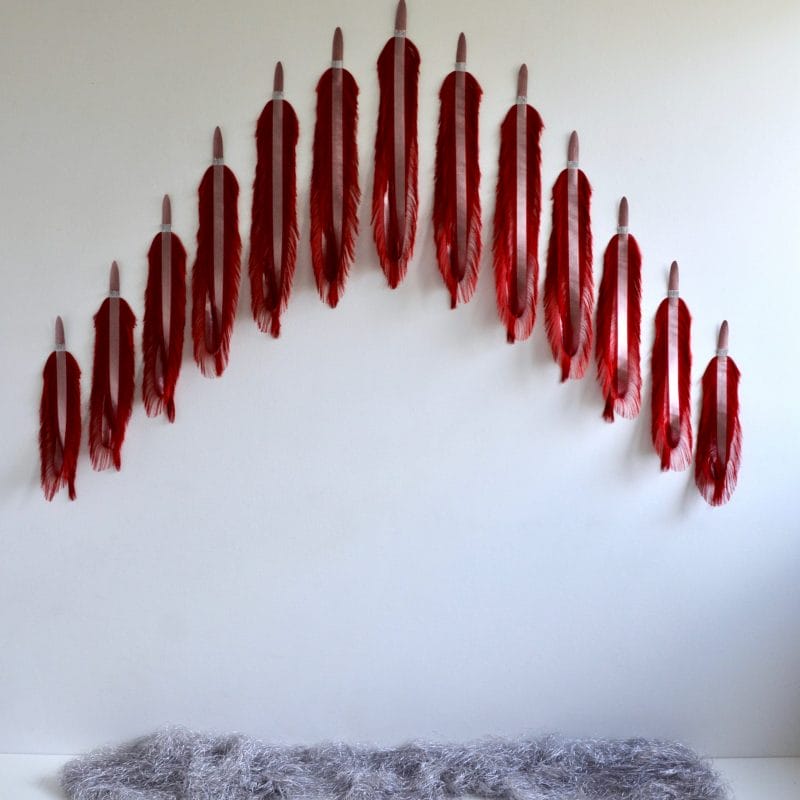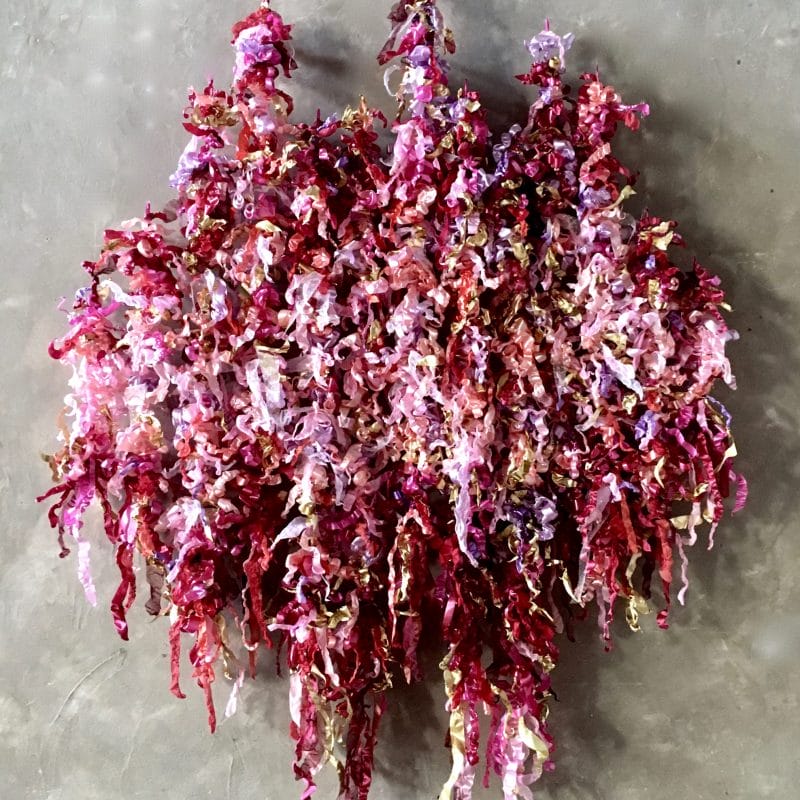INTERVIEW WITH JORGELINA ALESSANDRELLI

Jorgelina Alessandrelli was born in Argentina and graduated in Fine Arts from the National University of Rosario and subsequently in Pedagogy, dedicating herself for a few years to teaching art subjects in schools. Although the period of training and this first working phase have helped to outline and develop her expressive canons, the many countries where she has lived since 2000 will be decisive for her research – a wealth of experiences and cultural and aesthetic contaminations that will influence the formal figure of her works. She has exhibited in exhibitions and spaces in Brazil, the United States, Argentina and Italy. She has lived in Monza (Italy) since 2014.
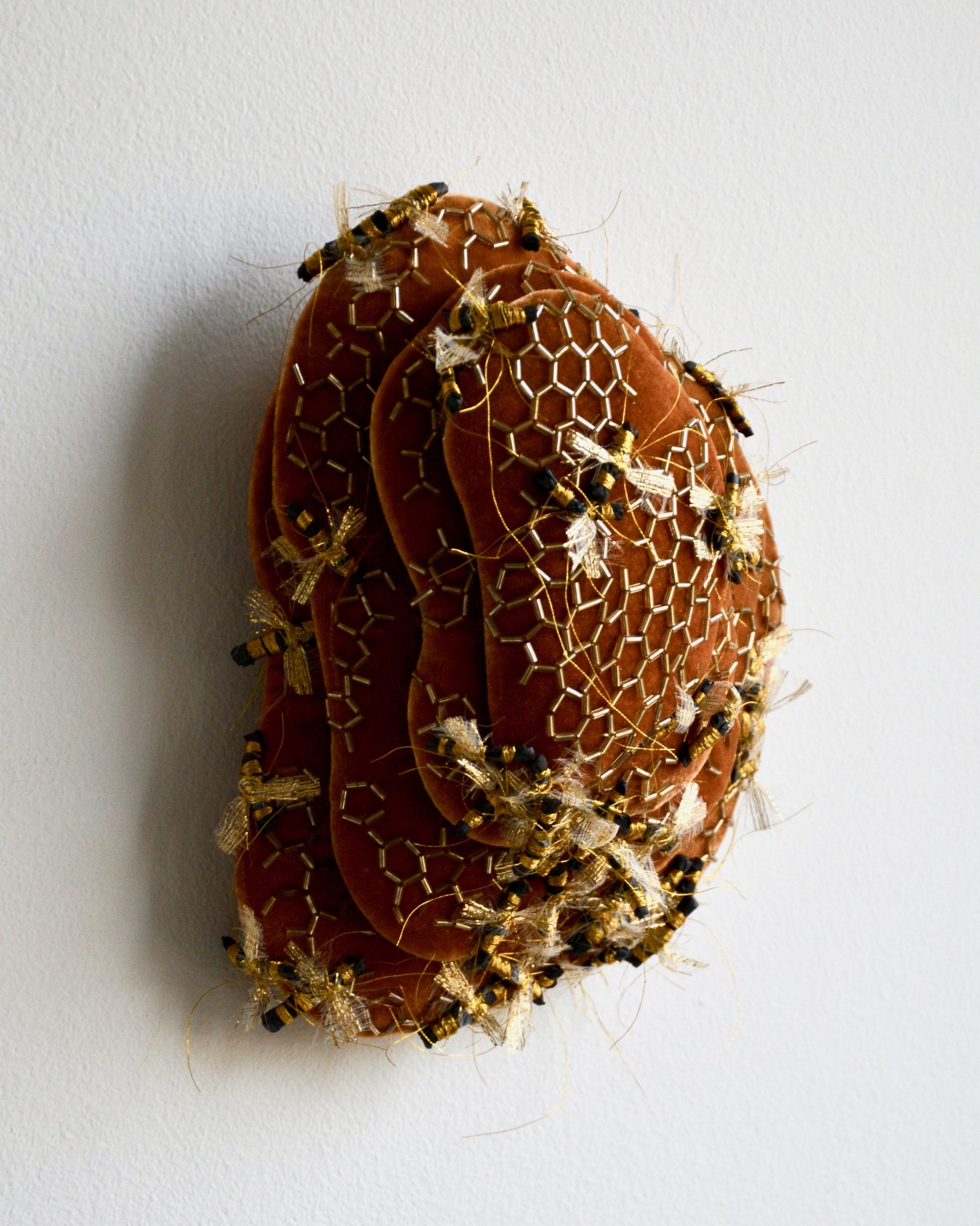
Sweet home, 20x20x20, hand sewn, embroidered. 2020
Nature is for you more than an immense source of inspiration – it is an interlocutor with whom you have a constant dialogue in your works and through them. Where and how is this relationship of love and wonder born?
I was born in Argentina, and since I was a child I have had close contact with the rural environment. Growing up watching my parents love nature in all its forms has had a great influence on me. My mother taught in a field school and the whole family had moved there during elementary school. We used to garden.Sowing, fertilizing, watering, seeing this natural process grow and appreciate was an everyday thing. The relationship with the natural world was constant. The immensity of the landscape, the colors of the sunset on the horizon, the fertility of the earth, the contact with animals, were our world. I believe that those experiences of life and love remain forever. Today I am aware that my need to create reliefs, volumes and tactile richness in my works most likely comes from these life experiences.
Crepuscolo. 150x200cm. Fiber Installation. 2018
Spinning, weaving, sewing, weft, warp: the terms of textile art have a variety of references to the narrative but also to life itself. What do you tell through your works? How much art is life and is life art for you?
We are social nature, but first of all we are nature. Nature is interconnected in a thousand ways. There is no feature in an ecosystem that does not depend on other features to be efficient. This makes me think that nature behaves like a system that connects life, environment, energy. Humanity as part of it is woven into that structure. We are life and energy that interact, so then we form another structure – the social one – another network. As a community, we are connected through our actions and thoughts.
My art refers to all that close interconnection we are a part of, be it natural or social. I believe that art is for me a way of looking at life and the world, of reflecting and giving it a new meaning.
Alba. 50x200cm. Fiber Installation. 2018
What was the first textile work you made? How did you approach this medium?
As a child, experimenting with textiles was a constant during my summer holidays. It was a very playful period in which together with my grandmothers I learned crochet, embroidery, sewing … it was a kind of technical research and I discovered the richness and charm of soft, thin, malleable materials; so the world of ribbons, scraps, threads represented a truly captivating creative adventure.
Much later, while I was living in the United States, Elena Osterwalder, an artist I admire encouraged me to participate in a “Paper & Fiber Art” exhibition. I was already working with paper, but I was curious to explore the use of fiber in the artistic field. So I started creating a work that reflected on immigration. It was an artist’s book in the form of a scroll that represented a wave of the sea.It was called “Te vas Pensión en Volver” (“You leave thinking about returning”) and it spoke of the energy and the back and forth movement of the waves of the sea; a metaphor about the same energy it takes for those who leave their homeland, but also always have the energy to return. It spoke a little about me too …
Yo queria esta mas bonita, 100x50cm. escultura vertical.2020
Your works are always very colorful, lively, shiny: where does the chromatic exuberance of your works come from?
During the time I lived in Brazil and Mexico, I had the opportunity to appreciate the way in which color is expressed in these countries. The light that exists in these countries in conjunction with their exuberant nature is present in everything that is produced and created. It comes from nature like a chromatic flow that reaches everywhere: popular events and festivals, art, design, furniture.Here they use colors in a bold, sophisticated, but also very genuine way because they always express a strong connection with this land. In the aesthetics of these peoples, color is joy, energy, meaning, and this discovery was something wonderful and of great impact for me.
This aspect that I admire in them has influenced my way of telling myself “chromatically” through my works ..
Te vas pensando en volver, 120x60cm. Libro de artista. 2014
Many of your works are of significant volume but also convey a great sense of lightness. A sort of ambivalence between staying and flying away. Do you think there is some analogy in this ‘occupying’ space without however ‘anchoring’ with your living in many countries and on different continents?
The important volumes with the weight of their presence would be a bit like saying “here I am! I am there to all intents and purposes, here, now, and I live intensely the place where I am ”, But I believe that at the same time in which we can“ be there ”, we can also dare to“ be light ”. I think we have a deep need to feel light in order to live. I always try to be really good about equipment; I believe what matters are life experiences, and I have always had the curiosity and the desire to enrich my experience in diversity.
Notte, 80x80cm. scultura verticale. 2019
Which techniques and materials do you prefer for your works and how do you choose from time to time one and the other?
To build my vertical volumes, objects and installations, I often use soft materials; I have always been very attracted to flexible quality and everything that has this characteristic intrigues me: qualities that I find in fabrics, threads, paper, ribbons, often also in waste materials.In my opinion, the latter have an added value: their previous stories. I love to work them in unusual ways. Depending on the idea, I look for and choose different characteristics in the materials, such as transparency, brightness, nuance, iridescence … or a hairy, rough or velvety material.Although I start from a general idea, my work process is generally intuitive. The tactile interaction while handling the material in my hands represents a playful, magical moment. I fold, I create wrinkles, crush, fill, cut out, tear, hole; I let myself be fascinated by its intrinsic qualities. Progressively these actions follow one another, the work is configuring a meaning for me. It is a beautiful moment. Incredibly, ideas or forms always come out that represent my personal or even collective reflection.
My method is to create models that then overlap, interlock or intertwine. Sometimes I wrap and stack objects, create folds and layers, other times I cut out and slide out the outlines. I use stitching, collage and embroidery for the details.
When my project acquires “body”, I decide what the composition will be like to create a harmonious whole.
Los hilos del tiempo, 100x50cm. Instalacion textil. 2020
How have your works and your research changed over time? How did the last, difficult year of the pandemic affect your work and your vision of art?
I think that in the past there was perhaps a more playful, carefree atmosphere in my works. Now I am moving into a more reflective space towards nature and its complexity, about human existence as part of it, fundamentally exploring concepts of mutation, fragility and balance.
Since the pandemic started, I have often thought about life. Now more than ever we realize that we are part of a whole, that our behaviors have global consequences. After the pandemic I embrace even more everything that has to do with the care of the environment, with the balance of nature, aware that every damage we do to it we are doing to ourselves, altering our balance as species.
Art is my voice, the voice that through my work allows me to say things to rethink the world in which I exist.
I think art is a language that can help you reflect: you have to excite, emotion moves everything. Everything we remember in life was generated through emotions. In this sense, art can also change one’s mind, generate critical thinking because I believe it is a powerful voice that speaks to the world.
Let it beee, 100x60cm. Paper installation. 2019
What is your dream in the drawer?
Creating empathy through my work. Arouse a moment of beauty and awareness. Generating emotions.
Nothing much……
